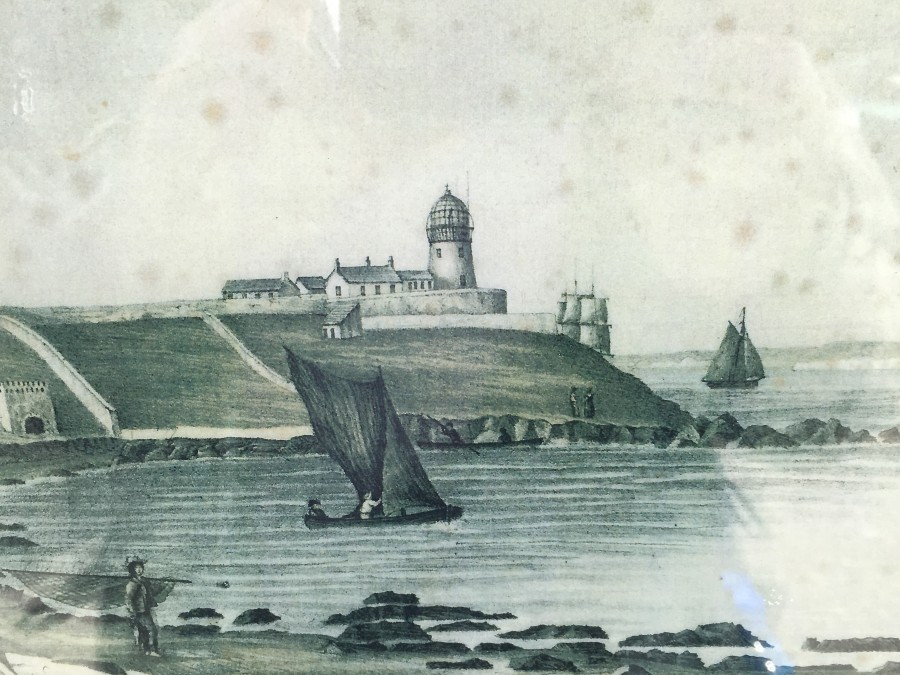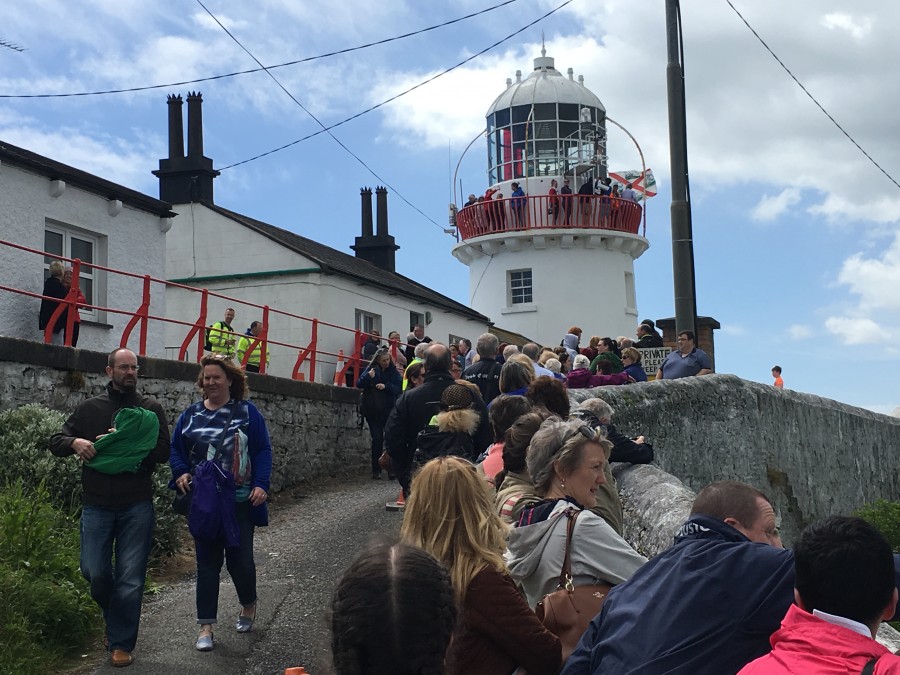Kieran’s Our City, Our Town Article,
Cork Independent, 30 May 2019
The Lights in the Dark
My new book The Little book of Cork Harbour has recently been published by The History Press (2019). Following on from last week, below is another snippet from the book– focussing on some aspects of Roches Point Lighthouse and Daunt Rock lightship in the harbour.
Roches Point Lighthouse:
Around 1640-1650 AD, the Roche family purchased the Fitzgerald estate (approx 1500 acres) from Edmund Fitzgerald of Ballymaloe and lived for many centuries at Trabolgan. Roches Point at the mouth of Cork Harbour is named after this family. In post medieval times a tower existed on the estate called Roches Tower. In 1759, this tower was taken down.
A letter dated 28th August 1813 from Vice Admiral Thornborough of Trent, Cork Harbour, was read to the Ballast Board on 2 September 1813. In this letter he pointed out the danger of which vessels were put in frequenting Cork Harbour for want of a light house at the entrance to the harbour. This small lighthouse was working by June 1817 but its tower was not conducive to a major harbour of refuge and port, in 1835 it was replaced by the present larger tower.
The year 1864 coincided with further additions to the lighthouse. In September 1864, it was decided by the Ballast Office is Dublin that the lantern at Roche’s Point lighthouse be changed to a red revolving light, showing its “greatest brilliancy once in every minute”. It came into effect on 1 December 1864. On the evening of 1 October 1864, a fixed white light was exhibited from the base of the lighthouse (a second light to the red one). This light was to shine towards seaward, between the bearings of S W by W and S W ½ S or between Robert’s Head and a distance of half a mile to the Eastward of Daunt’s Rock. Mariners were cautioned when approaching Cork Harbour by night to keep to the eastward of the limitations of the white light, until they had passed Daunt’s Rock. A fog bell was also erected which was to be sounded eight times in a minute during thick or foggy weather.
On 1 September 1876 two further improvements were made. The red revolving light in the lantern of Roche’s Point lighthouse was changed to an intermittent white light, showing bright for 16 seconds, and suddenly eclipsed for five seconds. This gave a brighter and more easily distinguishable light. The other improvement was the substitution of a larger fog bell hung from a belfry and sounded twice in a minute, for that which had hitherto bung at the basement of the light house, was sounded eight times per minute. The previous bell was of very little practical use as it could not be heard until a ship had got within the headlands. The new bell on the other hand, could be heard sooner, at a greater distance, and more distinctly.
In March 1888, new tenants were sought for the valuable plot of ground immediately adjacent the lighthouse complete with signal tower and four dwelling-houses, to be held for a long term at the yearly rent of £30. The houses had been availed of by the late owner as a commanding position offering means of communication with passing vessels.
By the early twentieth century, Roches Point had a fixed light 60 feet above high water with a visibility of 13 miles. It also has a recurring light, 98 feet, above high water, which can be seen fifteen miles away in clear weather.
By July 1970, Roches Point Lighthouse was all electric with a mandley generator to take over in case of ESB power failure. Formerly the light functioned by use of vaporised oil through a special type regenerative burner. The power of the light was also increased to being white 46,000 candelas and red 9,000 candelas.
By 30 March 1995 the presence of somebody physically watching out for mariners disappeared forever, at 11am when the three lighthouse keepers left the facility for good. The workings of the equipment became automated and were to be monitored from a lighthouse depot in Dun Laoghaire, Dublin. As to the foghorn the Commissioners for Irish Lighthouses decided that with modern shipping equipped with GPS navigation systems the foghorn, had become costly to maintain or replace, so it was no longer required.
Daunt’s Rock Light Ship:
Daunt’s Rock is between four and five miles south west of Roche’s Point and was named after a Captain Daunt whose British man-of-war ship hit the rocks and sank in the earlier part of the nineteenth century.
Up to 1865 it was beyond the limit assigned to the Harbour of Cork by the British Navy. It was not marked on the Admiralty Chart of Cork Harbour. In April 1864 following the smashing of the ship City of Cork upon the Rock, the Board of Trade strongly urged to remove the rock as soon as possible. They proposed that until its removal was implemented, to protect it by a lightship. Engineer Sir John Benson was requested to make an accurate survey of the rock.
By June 1865 a bell boat beacon was placed to mark the position of Daunt’s Rock. It was shaped like a boat and was surmounted by a triangular superstructure of angle iron and lattice work, which was coloured black, with the words “Daunt’s Rock” marked in white letters on it. The ball on the top of superstructure was 24 feet above the sea, and the beacon was moored within 120 fathoms SSW of the Rock and in 12 fathoms at low water spring tides.
In June 1974, The Irish Lights commissioners announced that they intended to withdraw the Daunt’s Rock lightvessel outside Cork Harbour and replace it with a high focal plane flashing buoy painted black and white. When the lightvessel was taken away in August 1974, radio beacons were established on the Old Head of Kinsale and at Ballycotton. The withdrawal followed the general pattern of Irish Lights policy. In the 1970s four lightships on the east coast of Ireland were replaced by flashing buoys.
The Little Book of Cork Harbour (2019) by Kieran McCarthy is published by The History Press and is available in Waterstones, Vibes and Scribes and Easons.
Next Walking Tour:
Sunday 9 June, Stories from Cork Docklands, historical walking tour with Kieran; meet at Kennedy Park, Victoria Road 2pm, free, duration, two hours, part of the Cork Harbour Festival and Sea Fest, finishes nearby.
Captions:
999a. Roches Point Lighthouse, early nineteenth century by H Morgan (source: Cork City Library)
999b. Public open day at Roches Point Lighthouse, 4 June 2017 – celebrating 200 years since its construction. The event was organised by the Cork Harbour Heritage Alliance in association with the Commissioners of Irish Lights (picture: Kieran McCarthy)


